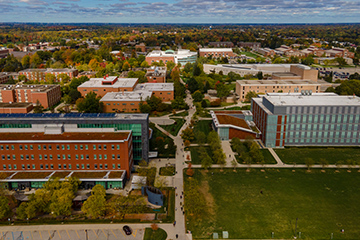Parkinson’s research highlighted at international conference
Blending Light, Stem Cells, and Exercise: A Promising Study in Parkinson’s Disease Research
Tommie Cammarano, a second-year Neuroscience Ph.D. student at CMU, recently attended the Grand Challenges in Parkinson’s Disease Conference at the Van Andel Research Institute, originally expecting to be an audience member. However, her plans took a surprising turn when she found out she would be presenting her own work. Originally drawn to the conference by a highly recognized keynote speaker, Cammarano’s advisor, Michael Sandstrom, Ph.D. encouraged her to submit a poster on her Parkinson’s disease research. Out of 40 abstract submissions, only two were selected to deliver talks, one of them being hers.
Cammarano’s talk described her current study which investigates the combination of exercise and light-activated stem cell transplantation as a potential treatment for Parkinson's disease. This innovative approach using the rat, which is a common research model, allows transplanted stem cells to be stimulated by light, enhancing their integration into the brain when paired with exercise.
Cammarano’s long-term rat study extends over two months, which is the equivalent of several years in humans. In Cammarano’s model, Parkinson’s disease is induced in one side of the brain in the rats, and stem cells are then transplanted into that same side of their brain. The rats undergo regular exercise over the course of two months to evaluate the effects of the stem cells and exercise on levels of dopamine and their recovery. At the end of the study, Cammarano will measure dopamine levels in the previously injured side of the brain, during both rest and active exercise. Since Parkinson’s symptoms are caused by the loss of dopamine, an important chemical in nerve cells, Cammarano aims to see if the treatment increases dopamine levels.
Cammarano found presenting her research to a crowd of 150 professionals to be somewhat intimidating, but it was also incredibly rewarding to gain valuable feedback from experts in the field. Cammarano hopes her research will one day contribute to effective treatments for Parkinson's disease, expanding the scope of available therapies for neurodegenerative diseases.




